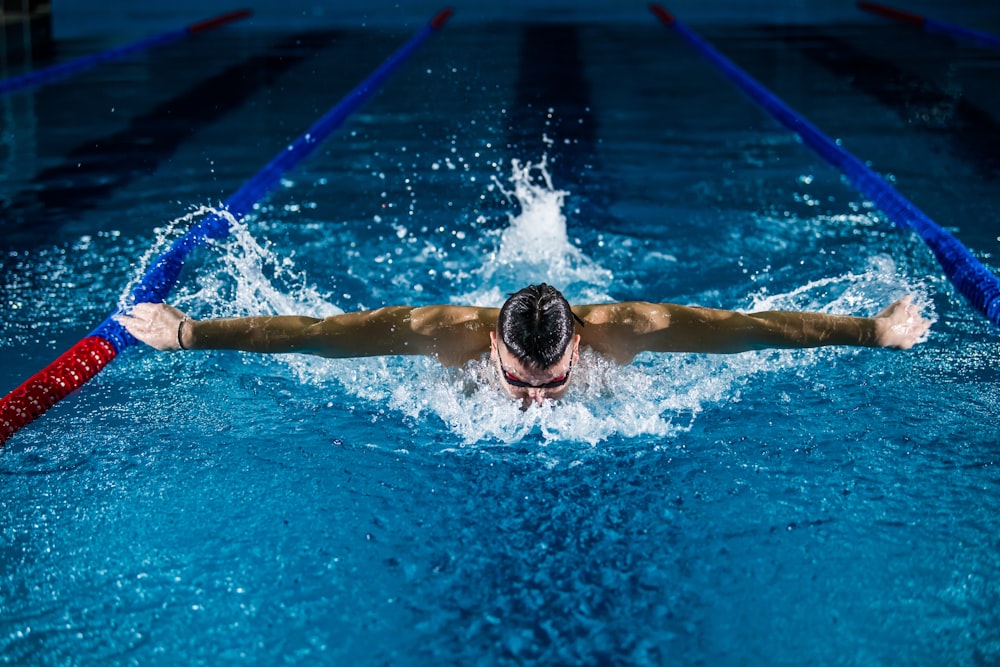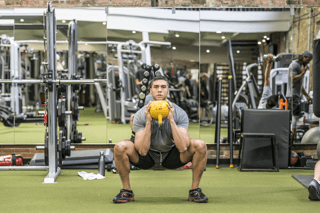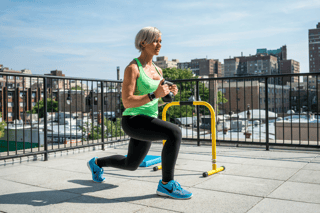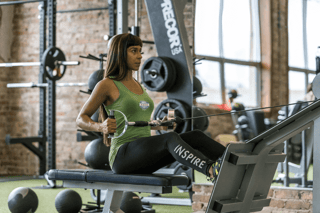MAKE A SPLASH
THIS SUMMER

Join Now For $0 Enrollment!
Learn MorePosted By: Chicago Athletic Clubs /
As Chicago Marathon runners are gearing up for October's race, most are already in full swing marathon training. Every runner has their own unique approach to training, often utilizing the motivation of running groups and clubs, or tapping into the expertise of a personal trainer to help customize their regimen.
Any marathon training regimen, however, will include a strength training component, essential to helping maximize performance for runners. Julie Speck, Chicago Athletic Clubs' Group Fitness manager and veteran marathon runner, gives her 3 essential exercises for marathon runners looking to improve their performance in their next race. Simple, effective, to the point, why mess with what works?
 Squats
Squats
Most people know squats are great for runners, but why? Squats increase strength through the legs and hips and improve range of motion in the ankles. Squats also help to improve knee stability, an essential for all runners and athletes. Stronger legs, improved range of motion and stability all mean less risk of injury, on or off the track.
Movement: When performing squats, posture is essential to protect the back. You want to always keep your core tight and your spine straight. Squat down between your legs until your hamstrings are on your calves. Keep your chest and head up and your back straight. At the bottom position, pause and hold for a breath.
Pro tip: Imagine you are trying to spread the floor apart when you squat. So before you even start, you are creating tension in your quads and glutes.
Upgrade: Single-leg squats help identify and even out muscle imbalances to prevent the risk of injury. Single leg squats also increase loads and build strength for each leg. When performing single leg squats, extend on eleg and hold your arms out in front of you to help with balance as you slowly lower your body with control, your spine straight and chest up, as if you are sitting into a chair. It's ok to start off with shallow squats and increase depth as you get stronger. The most important thing to remember is to only go as low as you can without breaking your form, and to keep your standing leg strong, knee straight over the toes and not waivering side to side. You can also hold lightly onto a chair, or hold a dumbbell out in front of you as a counterbalance.
 Lunges
Lunges
Lunges are great for improving a runner’s balance and dynamic flexibility by changing the load distribution and emphasizing one leg rather than two. Running isn't just forward motion; there is a lot of complex stability required as your body shifts side to side while propelling itself forward, and the more responsive your leg stability is, the more effective your running is and the safer your knee and ankle joints are. Lunges work the quadriceps, hamstrings and gluteals.
Movement: From a standing position, take a large step forward with one leg, landing heel first. Be sure you have a wide enough stance so that your front knee does not extend past your toes. Toes should always be facing forward. Lower your body straight down, keeping your spine straight and knees at 90 degree angles. Push back through the front heel to return to a standing position. Switch legs.
Pro tip: Proper form will keep you injury free. Be sure not to arch your back or let your front knee bend past your toes, and use slow, controlled movements to feel that glute burn!
Upgrade: Weighted lunges build strength in addition to balance and coordination. Add bicep curls for bonus points.
 Seated Rows
Seated Rows
Rows? For runners? Of course! Your back keeps you upright and good posture helps you remain injury-free.
Movement: Sit down on the machine and place your feet on the front platform, knees slightly bent. With your arms extended pull back until your torso is at a 90-degree angle from your legs. Your back should be slightly arched and your chest should be sticking out. This is the starting position of the exercise. Keeping the torso stationary, pull the handles back towards your torso while keeping the arms close to it until you touch the abdominals. Breathe out as you perform that movement. At that point you should be squeezing your back muscles hard. Hold that contraction for a second and slowly go back to the original position while breathing in.
Pro tip: Tuck your tail bone in to create strong core stability bringing bar to chest level. Think of squeezing your shoulder blades down and together while keep shoulders down and relaxed away from your ears.
Upgrage: Try a standing single-arm, single-leg cable row to add a balance and coordination component to the row.
| Alex Card
| Chicago Athletic Clubs
| Chicago Athletic Clubs
| Chicago Athletic Clubs
| Chicago Athletic Clubs
© 2026 Chicago Athletic Clubs. All Rights Reserved. Privacy PolicyEmployee Login
https://www.chicagoathleticclubs.com/
https://www.chicagoathleticclubs.com/services/personal-training/
0
5000
true